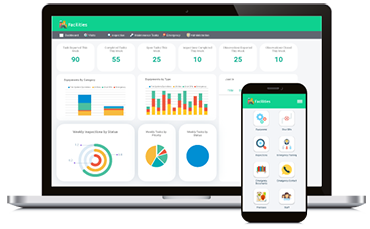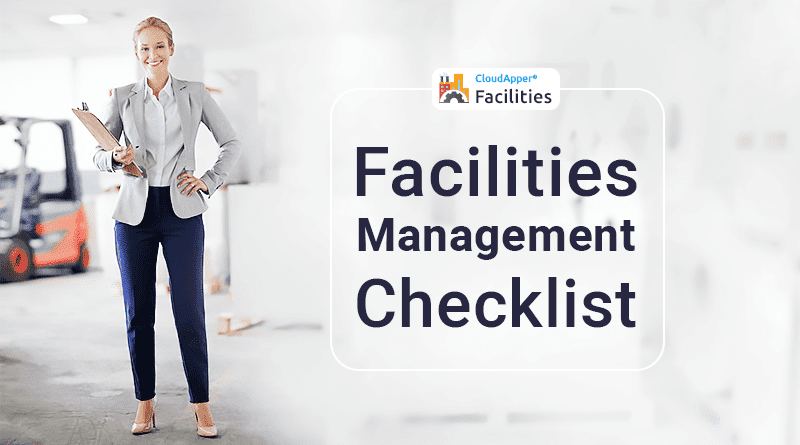Lean maintenance is a popular global practice, and most manufacturing managers know that it cuts costs and improves productivity by minimizing downtime. But in reality, for example, 90% of the maintenance performed by U.S. manufacturers is more reactive than proactive. Some blame the absence of spare parts, the age of their equipment, or the rapid pace of manufacturing.
However, it is still possible to implement production and manufacturing maintenance best practices with the help of CloudApper’s Facility Manager or CMMS, and doing so can improve your production rate and help you save time and money in the long run. That said, here are some of the best lean maintenance practices you can establish at your manufacturing operation by making use of our facility management software.
Collect data and determine your downtime costs
Before you can establish manufacturing maintenance best practices, you will need to gather data to determine the scale of the challenge. Collect information on machine downtimes, the average mean time between machine failures, expenditures on parts, technology usage, technician response time, and the percentage of on-time deliveries. With this information, you can calculate the average cost of one hour of downtime. Sounds too hectic? If you were already using facility management software, you would already have the information at your fingertips.
Calculate the dollar value of maintenance
You can project how much money maintenance refinement would save by determining the average per-hour downtime cost. You can make logical assumptions by comparing the per-hour cost of downtime with machine availability, and determine how much value an increment of availability will add to the organization. You will be surprised to find that even a small increase, as little as 3%, would translate into a significant improvement.
Anatomize operational variables
When determining estimated productivity increases due to improved machine availability, it is also necessary to take into account the savings your maintenance activities can create by addressing operational variables. For example, examine how introducing an automated scheduled maintenance and work order system, or a faster technician response could impact availability.
Leap of faith in technology
Businesses that aren’t making proper use of technology are missing out on a lot of opportunities. As you can see above, gathering information and controlling variables adds significant value, and a technology solution can make the undertaking simpler. For example, facility management or computerized maintenance management system (CMMS) software streamlines work order requests and improves staff and technician responsiveness, also lowering the meantime for repair, maintenance, and overall downtime.
Introduce preventative maintenance scheduling
With a CMMS or facility management software that enables you to streamline work orders, you can easily monitor all operations that are being performed across all your departments in real-time and track all critical and spare parts. This allows you to schedule preventative maintenance on the go and generate reports to manage maintenance tasks.
Deploy a maintenance scheduling planning system
This is another aspect facility management software can help you with. As you move towards a more proactive approach from reactive methods, you will need to schedule technicians and make sure the right parts are available when needed. A maintenance planning schedule is a critical tool for reducing downtime and maximizing the value of preventative maintenance.
Focus on total productive maintenance (TPM)
The next step should be to get your operators involved in total productive maintenance. TPM is a method of managing physical assets by focusing on maintaining and improving manufacturing machinery to reduce operating costs. You can make use of facility management software to leverage operators’ familiarity with assets where you can assign or enlist operators in maintenance, such as installing sight gauges or cleaning and freshly painting assets to aid in the visual inspection that enable operators to keep track of fluid levels.
Practice the Reliability Centered Maintenance (RCM) strategy
Once you have all the tools and practices in place, you can start making use of the RCM strategy. With CMMS or facility management software, you will be able to get a clearer view of machine status and capabilities all from one central space. This allows you to avoid taking equipment offline for preventive maintenance unless your data indicate imminent failure.
Employ third-party technicians as required
Last but not least, achieving leading-edge manufacturing maintenance involves huge cultural transformation, but with a shortage of skilled workers, it may be necessary to bring in third-party resources to define processes and establish metrics. If you are looking outside of your organization to achieve cultural transformation, make sure to get references from existing customers to ensure the best fit for your organization.
We Make Manufacturing Maintenance Practice Simple
Deploying lean manufacturing maintenance practices is not rocket science. However, transitioning from a reactive to a proactive state of mind requires commitment.
With our facility management software like the Facility Manager or CMMS, you can establish world-class maintenance management practices for your manufacturing operations and improve productivity at the same time. Above all, our solutions are 100% customizable. Start managing your business in a better way with just $10 per month!
To learn more about CloudApper solutions, get in touch with us today, or leave a comment below!



















